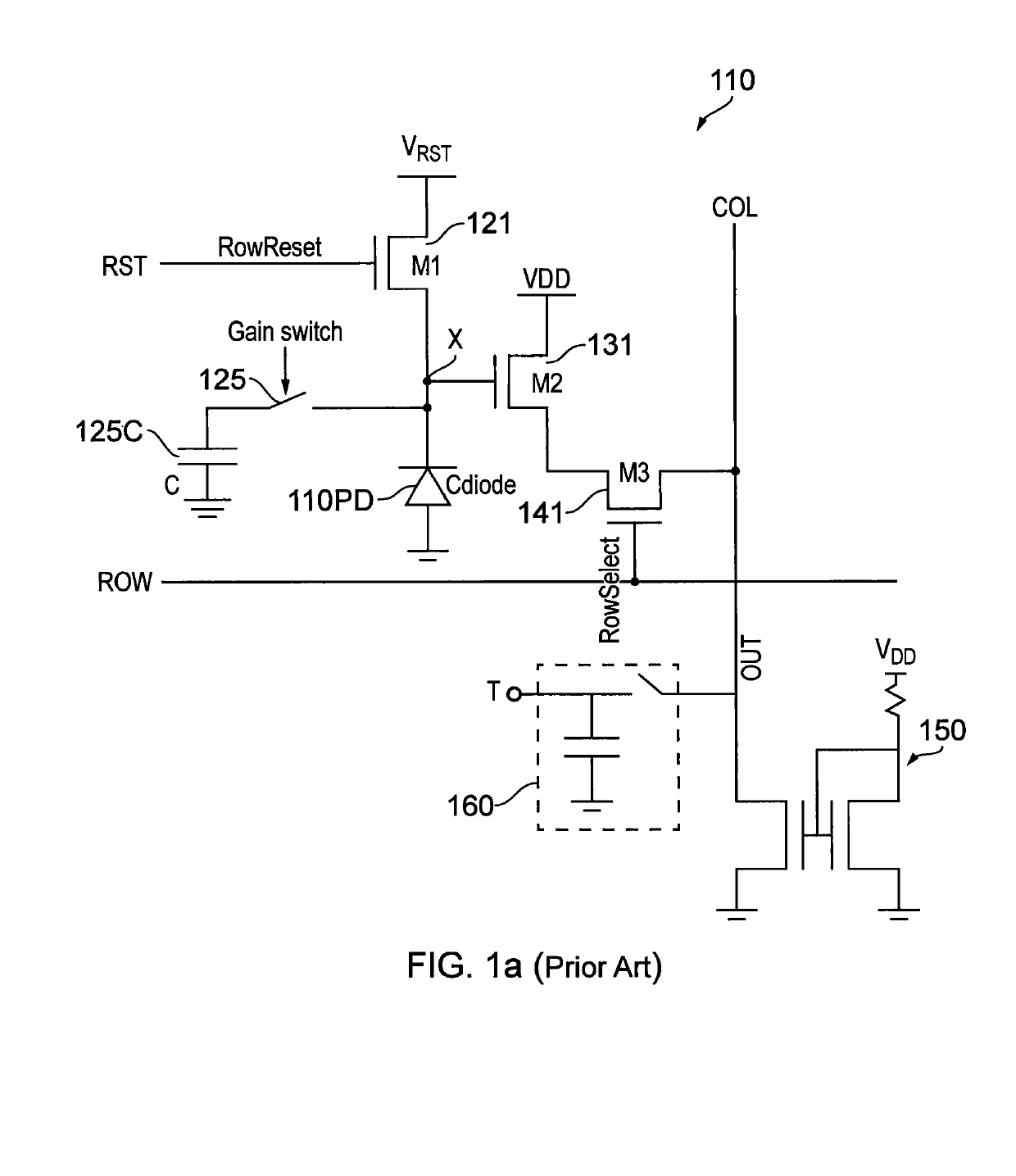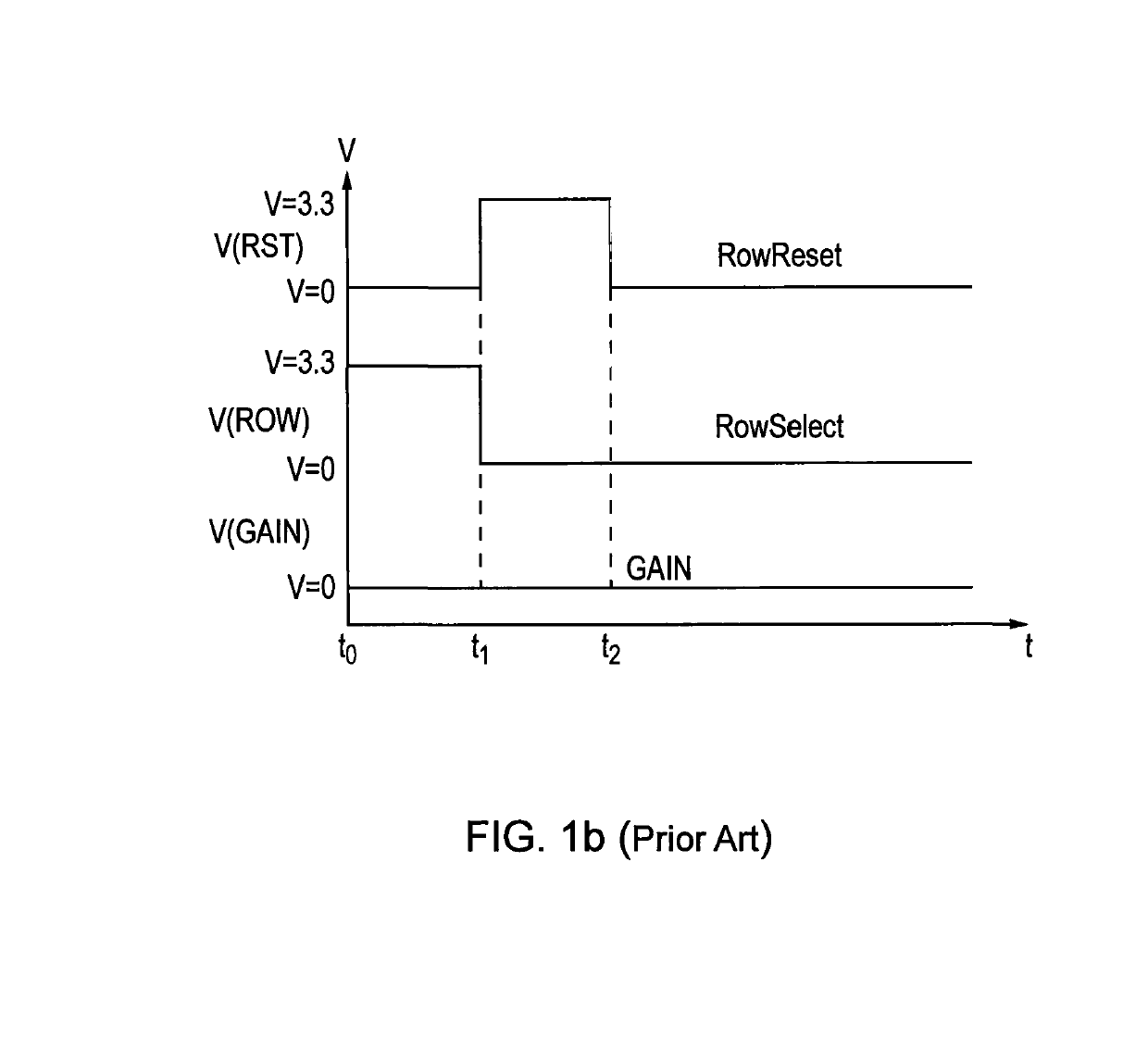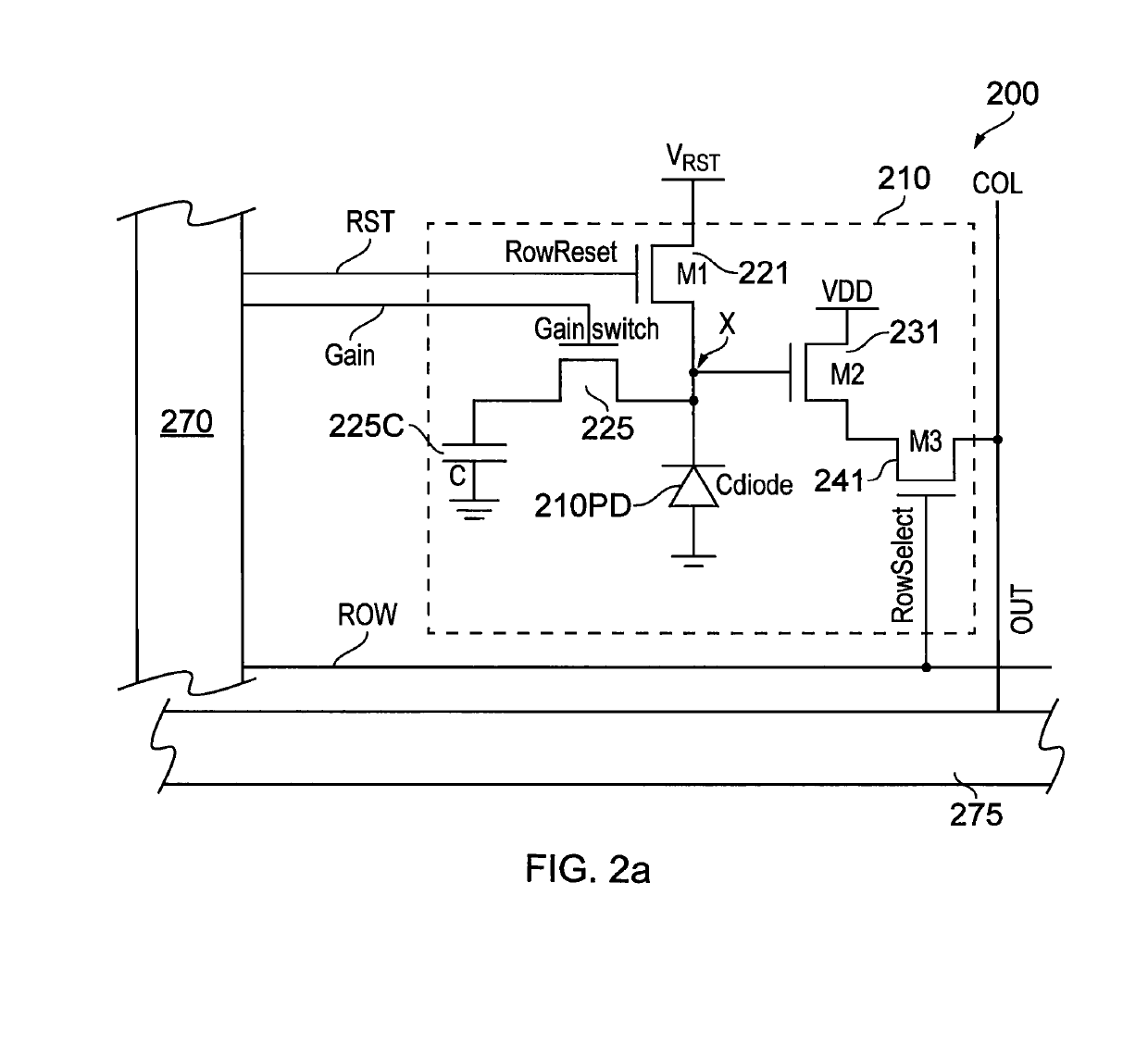Radiation detection devices and methods
a detection device and radiation detection technology, applied in the field of radiation detectors, can solve the problems of high signal to noise ratio, limited dynamic range of known detectors, saturation of detectors, etc., and achieve the effect of reducing the potential difference reducing the leakage of charge across the gain control switch element to or from the diode device, and increasing the corresponden
- Summary
- Abstract
- Description
- Claims
- Application Information
AI Technical Summary
Benefits of technology
Problems solved by technology
Method used
Image
Examples
Embodiment Construction
[0102]FIG. 2(a) is a schematic circuit diagram of a portion of a detector device 200 according to an embodiment of the present invention. The detector device 200 includes a pixel element 210. FIG. 2(b) is a further schematic illustration of the detector device 200. FIG. 2(c) is timing diagram associated with operation of the detector device 200.
[0103]In FIG. 2(a), like features of the pixel element 210 to those of the element 110 of FIG. 1 are shown with like reference signs prefixed numeral 2 instead of numeral 1.
[0104]As can be seen from FIG. 2(a) the pixel element 210 has a gain control transistor device 225 coupled between the photodiode 210PD and capacitor device 225C. When gain control signal line GAIN is set high, the gain control transistor device 225 closes and the potential across the capacitor device 225C is set to the potential at node X.
[0105]The pixel element 210 may be operated in a low gain mode in which gain control transistor device 225 remains closed during the in...
PUM
 Login to View More
Login to View More Abstract
Description
Claims
Application Information
 Login to View More
Login to View More - R&D
- Intellectual Property
- Life Sciences
- Materials
- Tech Scout
- Unparalleled Data Quality
- Higher Quality Content
- 60% Fewer Hallucinations
Browse by: Latest US Patents, China's latest patents, Technical Efficacy Thesaurus, Application Domain, Technology Topic, Popular Technical Reports.
© 2025 PatSnap. All rights reserved.Legal|Privacy policy|Modern Slavery Act Transparency Statement|Sitemap|About US| Contact US: help@patsnap.com



